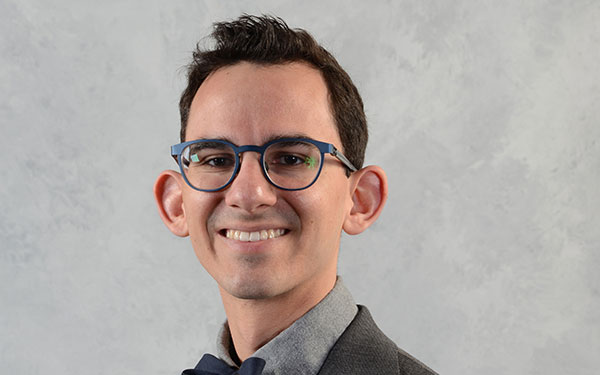
Student: Matthew Fainor
Project: 3D printing peptide-functionalized scaffolds for osteochondral regeneration
View: Research Poster (PDF)
Institution: Lehigh University
Major: IDEAS
Advisors: Lesley Chow
Abstract
Biodegradable polymers like poly(caprolactone) (PCL) can be functionalized with bioactive cues to promote tissue regeneration1. Our lab has developed a versatile strategy using peptide-modified PCL (peptide-PCL) conjugates to 3D print functionalized scaffolds without post-fabrication processing2. We are using this strategy to promote regeneration of the osteochondral interface with two specially designed conjugates: hyaluronic acid binding peptide-PCL (HAbind-PCL) to promote chondrogenesis3 and a mineralizing peptide-PCL (E3-PCL) to promote osteogenesis4. Previous studies in our lab have seeded 3D-printed peptide-PCL scaffolds with human mesenchymal stem cells (hMSC) to investigate in vitro tissue formation. However, long-term cell culture and degradation may adversely affect the surface chemistry of the scaffolds5. The goal of this work was to investigate if peptide presentation on the surface of functionalized scaffolds was affected by exposure to culture conditions for up to three months. We characterized scaffolds printed with HAbind-PCL and E3-PCL by fluorescence labeling using fluorescein-HA or amino-Cy3 to specifically label HAbind and E3 peptides, respectively. However, these molecules do not bind exclusively to the peptides and can react with other charged molecules adsorbed on the scaffolds’ surfaces during incubation. In order to more accurately label the HAbind and E3 peptides, we modified the HAbind-PCL with a biotin group and the E3-PCL with an azide group. Biotin and azide react specifically with streptavidin and alkyne respectively6,7, allowing for precise labeling. By tracking the peptide surface stability over time, we can better understand the chemistries with which cells will be interacting in order to more effectively control tissue regeneration.
References: [1] Chow, L. W., Adv. Healthc. Mater. 2014; 3; 1381-1386. [2] Camacho, P., Biomater Sci. 2019; 7(10); 4237-4247. [3] Goetinck, P. F., J. Cell Biol. 1987; 105; 2403-2408. [4] Polini, A., Biomater Sci. 2014; 2; 1779-1786. [5] Li, B. J. Biomed. Mater. Res. 2006; A. [6] Kongtawelert, P. Anal. Biochem.. 1990; 185(2); 313-318. [7] Liang, L. Coord. Chem. Rev. 2011; 255(23-24); 2933-2945.
About Matthew Fainor
Matthew Fainor is a senior majoring in IDEAS (Integrated Degree in Engineering, Arts and Sciences) with concentrations in Biomaterials & Biomechanics Engineering and Art & Design. He has performed undergraduate research with Dr. Lesley Chow using solvent-cast 3D-printing to fabricate peptide functionalized tissue engineering scaffolds for the last year. Interested in how biofabrication technologies can be leveraged to design more sustainable and more imaginative consumer products, his work predominantly revolves around textiles, wearable technologies, and how our bodies interact and interface with their surroundings. He has also played a major part in the Eco-Reps Leadership Program for the past four years, planning and leading educational events across campus in order to help students make more sustainable choices.
